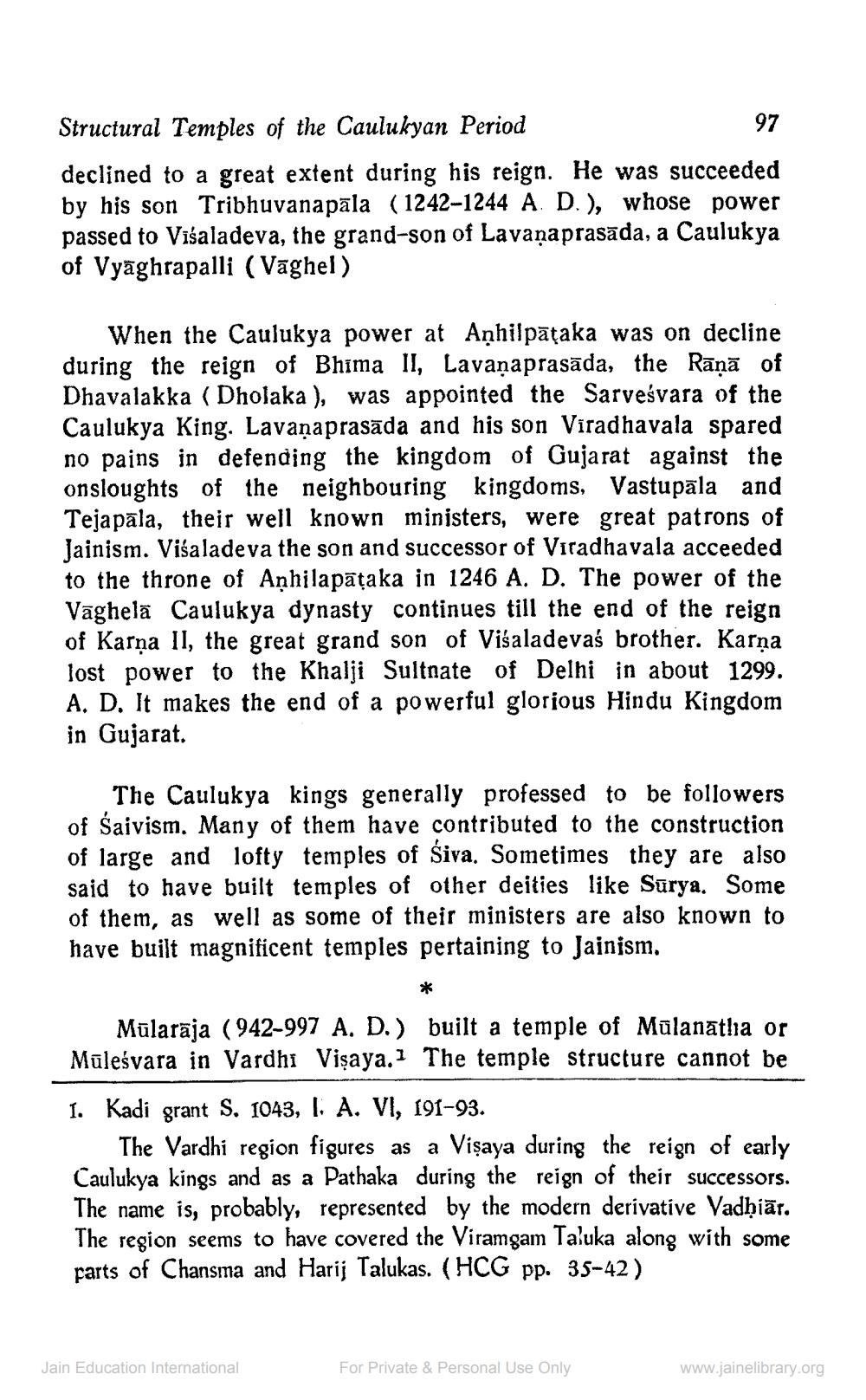________________
Structural Temples of the Caulukyan Period
declined to a great extent during his reign. He was succeeded by his son Tribhuvanapala (1242-1244 A D.), whose power passed to Visaladeva, the grand-son of Lavanaprasada, a Caulukya of Vyaghrapalli (Vaghel)
When the Caulukya power at Anhilpataka was on decline during the reign of Bhima II, Lavaṇaprasāda, the Rāṇā of Dhavalakka ( Dholaka), was appointed the Sarvesvara of the Caulukya King. Lavaṇaprasada and his son Viradhavala spared no pains in defending the kingdom of Gujarat against the onsloughts of the neighbouring kingdoms, Vastupala and Tejapala, their well known ministers, were great patrons of Jainism. Viśaladeva the son and successor of Viradhavala acceeded to the throne of Aṇhilapāṭaka in 1246 A. D. The power of the Vaghela Caulukya dynasty continues till the end of the reign of Karna II, the great grand son of Visaladevas brother. Karna lost power to the Khalji Sultnate of Delhi in about 1299. A. D. It makes the end of a powerful glorious Hindu Kingdom in Gujarat.
97
The Caulukya kings generally professed to be followers of Saivism. Many of them have contributed to the construction of large and lofty temples of Siva. Sometimes they are also said to have built temples of other deities like Surya. Some of them, as well as some of their ministers are also known to have built magnificent temples pertaining to Jainism.
*
Jain Education International
Mularāja (942-997 A. D.) built a temple of Mulanatha or Mūleśvara in Vardhi Visaya.1 The temple structure cannot be 1. Kadi grant S. 1043, I. A. VI, 191-93.
The Vardhi region figures as a Viṣaya during the reign of early Caulukya kings and as a Pathaka during the reign of their successors. The name is, probably, represented by the modern derivative Vadḥiär. The region seems to have covered the Viramgam Taluka along with some parts of Chansma and Harij Talukas. (HCG pp. 35-42)
For Private & Personal Use Only
www.jainelibrary.org




